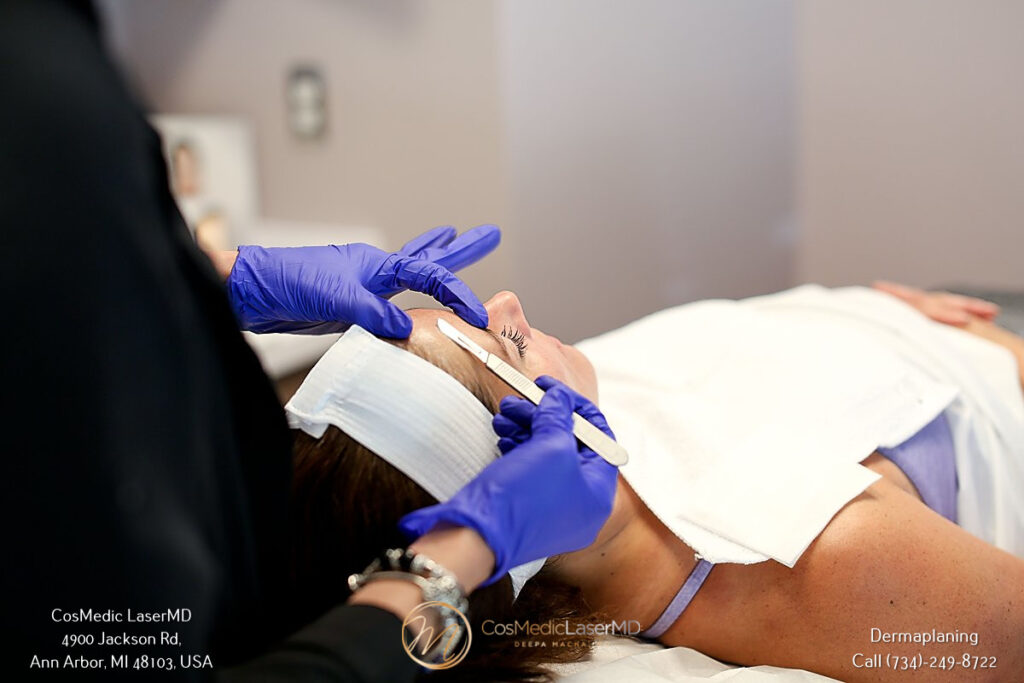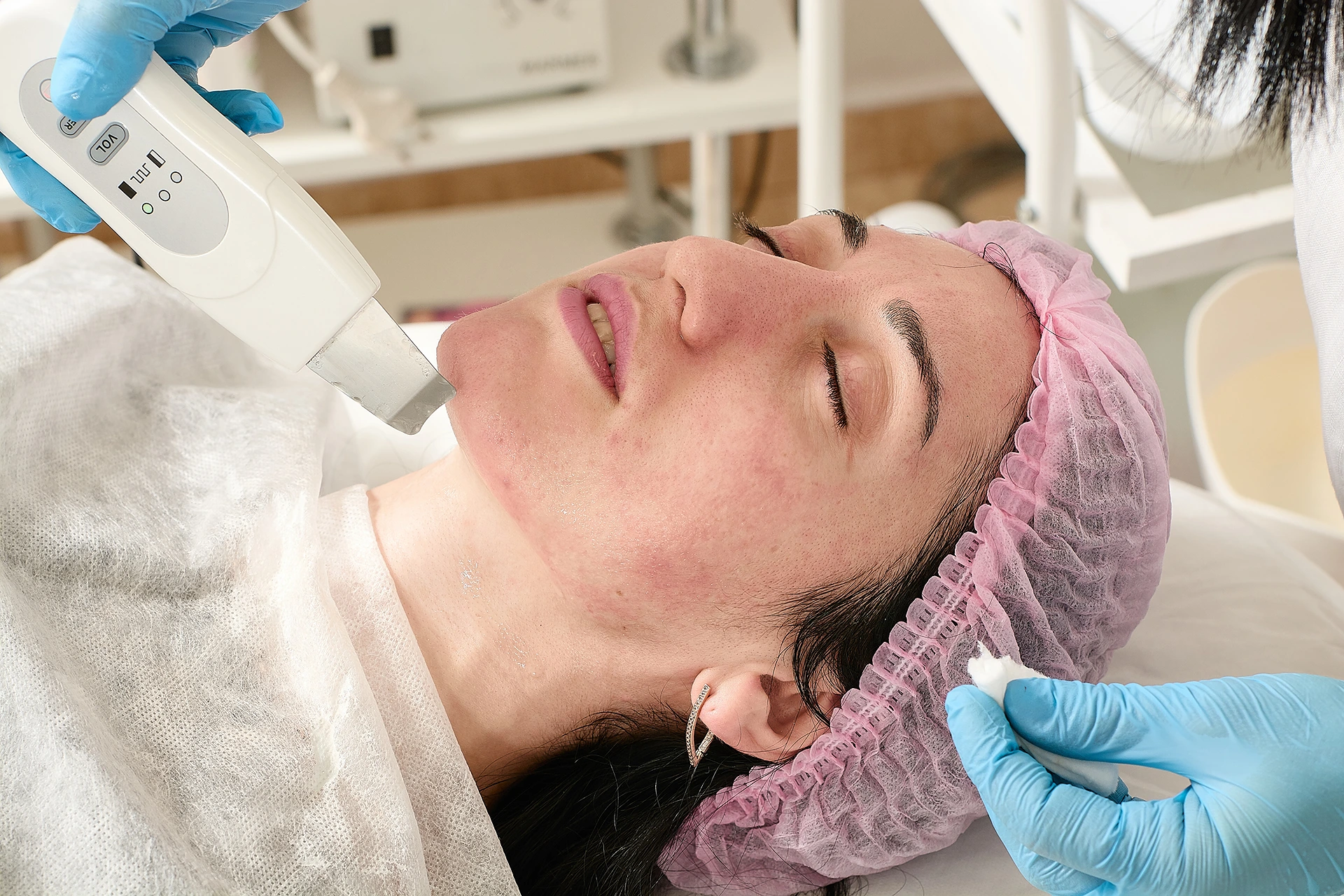Dermaplaning is a popular skincare treatment promising smooth, radiant skin. But some people regret the procedure.
In this article, we’ll cover everything about dermaplaning – what it is, benefits, regrets, and tips to avoid disappointment.
What is Dermaplaning?

Dermaplaning is manual exfoliation using a sterile, surgical blade to scrape off dead skin cells and fine vellus hair (peach fuzz) from the face. This treatment aims to reveal smoother, brighter skin and create a hair-free canvas.
The Procedure
Dermaplaning is done by a licensed esthetician or dermatologist in a professional setting. They cleanse your face and carefully hold the blade at an angle, dragging it slowly across your skin to remove surface debris and hair. It takes around 30 minutes or less.
Potential Benefits
Proponents of dermaplaning cite several potential benefits. By removing dead skin cells and vellus hair, it can leave your complexion looking more radiant and youthful.
It may also allow your skincare products to absorb better and create a smoother base for makeup application. Additionally, the temporary removal of peach fuzz can give your skin a soft, hairless feel.
Why Do People Regret Dermaplaning?
While dermaplaning is generally safe when done properly, some people may regret it for a few key reasons.
Unexpected Side Effects
One reason for dermaplaning disappointment is unexpected side effects. Though generally mild, some experience redness, irritation, and increased sensitivity immediately following treatment.
Those with active acne may also experience breakouts or flare-ups as the procedure can spread bacteria and clog pores. If not properly cared for, dermaplaning can lead to ingrown hairs or cystic pimples.
Disappointing Results
Another common reason people regret dermaplaning is that the results don’t meet their expectations. While it creates a smooth, radiant base after treatment, the effects are temporary.
The vellus hair grows back quickly, often within a week or two, requiring frequent repeat treatments. Some find that while their skin feels soft, the treatment didn’t improve overall skin texture or create a flawless makeup canvas.
Inexperienced Providers
Having an inexperienced provider perform your dermaplaning treatment can lead to regret. Proper technique is crucial to avoid issues like nicks, cuts, or uneven hair removal.
An inexperienced esthetician or dermatologist may fail to provide adequate pre and post-treatment guidance, increasing the risk of side effects, irritation, or poor results. Researching a provider’s experience level is key.
Can Dermaplaning Be Done Wrong?
Dermaplaning can be done incorrectly, especially at home. Professionals advise against DIY dermaplaning due to the risk of cuts, uneven hair removal, and potential for severe side effects. It’s best to see an esthetician for the procedure.
Can You Stop Dermaplaning Once You Start?
Yes, you can stop dermaplaning. There are no rules that dictate you must continue the treatment. However, maintaining a regular schedule can help keep your skin smooth and exfoliated.
Who Should Not Do Dermaplaning?
People with severe sunburn, active breakouts, sensitive skin, or taking medications like Accutane or tretinoin should avoid dermaplaning. People undergoing cancer treatment are advised against it.
How to Avoid Dermaplaning Regret

While dermaplaning has potential downsides, there are steps to minimize regretting the procedure.
Do Your Research
Before booking a dermaplaning appointment, research to ensure it’s the right treatment for your skin type and concerns. Consult with a licensed dermatologist or experienced esthetician specializing in dermaplaning.
Have them evaluate your skin and discuss realistic expectations based on your characteristics. Disclose any active skin conditions like acne.
Proper Aftercare
Proper aftercare is essential to protect your skin post-dermaplaning. Your provider should give you customized instructions, but general tips include avoiding sun exposure, using SPF diligently, gentle cleansing and moisturizing while avoiding harsh scrubs or exfoliants, and adjusting your regular skincare routine to suit sensitive skin.
Manage Expectations
Have realistic expectations about the change dermaplaning can make.
While it can improve skin smoothness and glow, dramatic skin transformations may be unrealistic. Dermaplaning works best as part of a skincare regimen rather than a miracle treatment.
Does Hair Grow Back Weird After Dermaplaning?
The myth that hair grows back thicker or darker after dermaplaning has been debunked. Your facial hair won’t change in thickness or color post-treatment. However, you might feel some stubble as the hair regrows, which is normal.
When to Seek Professional Advice
Most dermaplaning side effects are minor and resolve with proper aftercare. But, when should you seek medical advice:
- If you experience severe, prolonged redness, swelling, or other reactions after treatment
- If you develop concerning symptoms like oozing, fever, or signs of infection
Before considering dermaplaning with very sensitive skin, active cystic acne, or other existing skin conditions that could increase risks
Your dermatologist or esthetician can evaluate your symptoms and skin, and provide guidance on whether to continue dermaplaning or seek an alternative treatment.
Are There Negatives To Dermaplaning?
Yes, there are potential negatives to dermaplaning. Common side effects include breakouts, infection, redness, discoloration, and irritation. Overdoing the treatment can lead to skin irritation and inflammation.
Not everyone is a good candidate for dermaplaning, especially those with active acne, sensitive skin, or certain medical conditions.
Does Dermaplaning Have Long Term Effects?
Dermaplaning doesn’t have long-lasting effects. It clears three weeks’ worth of dead skin cells, but the results don’t last. The treatment needs to be repeated to maintain smooth skin.
What Is the Most Common Complication of Dermaplaning?
Common complications of dermaplaning include minor side effects like facial redness, whiteheads, and patchy skin pigment post-treatment. Serious complications like infection and scarring are rare but possible.
Is Dermaplaning Once a Week Bad?

Dermatologists advise against dermaplaning weekly to avoid irritation or breakouts. Beauty experts recommend a fortnightly treatment to rejuvenate the skin without over-exfoliation.
How Do I Fix My Skin After Dermaplaning?
After dermaplaning, your skin will be sensitive, so treat it gently and avoid harsh products. To maintain your skin post-dermaplaning, you should:
- Apply a hydrating serum or face oil to nourish and protect the skin.
- Stick to a simple skincare routine with a gentle cleanser, hydrating serum or face oil, and daily sunscreen.
- Drink plenty of water to keep your skin hydrated.
- Avoid facial scrubs and treatments for at least two weeks to protect your skin after treatment.
- Wear a broad-spectrum sunscreen to protect against sun exposure.
- Avoid touching your face to prevent irritation.
- Avoid wearing makeup for at least 24 hours to let the skin recover.
How Long Do Dermaplane Results Last?
Dermaplaning results can last three to four weeks, depending on factors like skin type, skincare routine, and lifestyle. Consult a skincare professional to determine the ideal frequency.
Is Dermaplaning Really Worth It?
Dermaplaning can be worth it for many people, as it provides immediate improvements in skin texture and appearance, making the skin smoother, brighter, and more radiant.
It’s beneficial for those with acne scars, dull skin, dry skin, sun-damaged skin, and fine wrinkles. However, it’s not a permanent solution and requires regular treatments to maintain the results.
The cost of dermaplaning sessions can vary, so consider whether the benefits align with your budget and skincare goals.
What Happens if You Dermaplane Too Often?

Dermaplaning too often can lead to over-exfoliation, damaging the skin barrier. Follow the recommended frequency of treatments, typically once a month or every six weeks for sensitive skin.
Over-exfoliating can strip the skin of natural oils, causing dryness, irritation, and sensitivity. Consult a skincare professional to determine the best schedule for your skin type and condition.
Conclusion
Dermaplaning can provide smoother, brighter, hair-free skin when done correctly – but managing expectations is crucial. By researching, selecting an experienced provider, following pre and post-care diligently, and having realistic goals, you can minimize risks and maximize satisfaction with your results.
While not risk-free, many find dermaplaning valuable for a fresh start and improved glow. With proper precautions, you can avoid regret and enjoy the benefits of a smooth, revitalized complexion.







